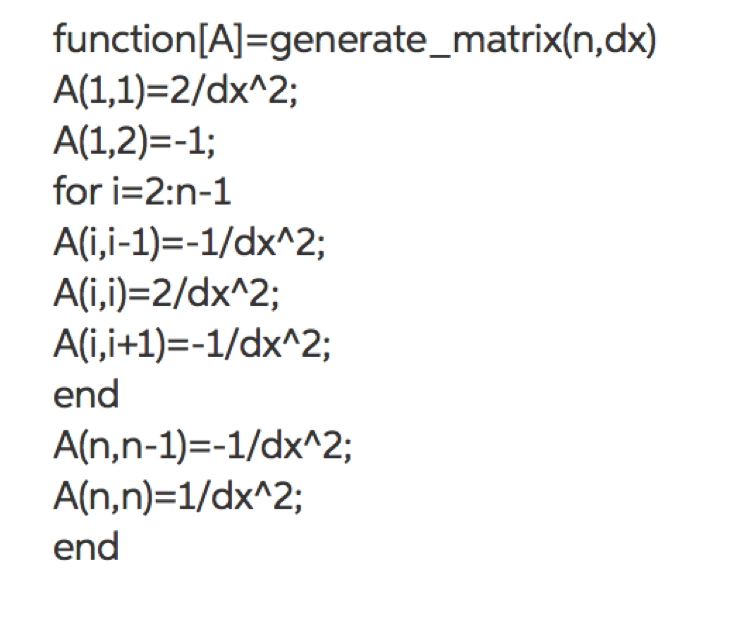Answered step by step
Verified Expert Solution
Question
1 Approved Answer
The routine I used for Problem 1 to generate A was: Problem 2, We will assume that the forcing is f(x) = sin 51x. (i)


The routine I used for Problem 1 to generate A was:

Step by Step Solution
There are 3 Steps involved in it
Step: 1

Get Instant Access to Expert-Tailored Solutions
See step-by-step solutions with expert insights and AI powered tools for academic success
Step: 2

Step: 3

Ace Your Homework with AI
Get the answers you need in no time with our AI-driven, step-by-step assistance
Get Started


